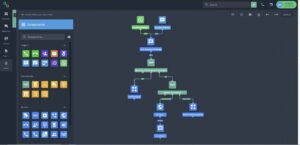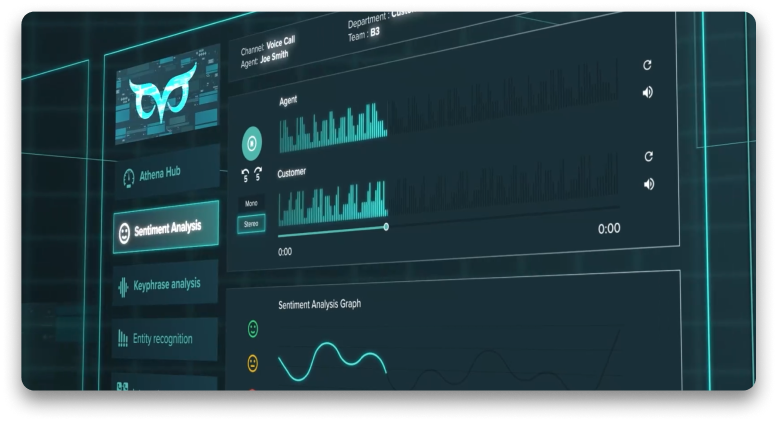Customer Service Automation Software: How Flow can help your contact centre
Customer Service Automation Software solutions have been becoming increasingly popular in the customer engagement landscape. As we explored in our article about Customer Service Automation, contact centres and customer service departments across all industries have been betting on automation solutions to speed up their processes, increase their outputs, and ultimately serve more customers better and faster.
Many Customer Service Automation software tools only include features like Chatbots, Help Centre creators, canned responses, or automated customer satisfaction surveys. However, our definition of Customer Service Automation goes far beyond that.
We have defined Customer Service Automation as any type of measure or technology designed to automate any part of the processes relative to customer service operations, not necessarily just the interactions between customers and representatives. This definition is outlined in our article, but also represented by Flow, our Customer Service Automation Software tool.
Our Flow feature can empower you to model and automate entire customer journeys from scratch, as well as tweaking and readjusting them to suit your customers’ needs on the go with an intuitive drag-and-drop interface.
With Flow, you’ll be able to easily design and automate your customer service operations from start to finish, integrate any channel you can think of, deploy automatic customer satisfaction tracking, and pair up with AI to reach unprecedented levels of efficiency, all without writing one line of code.
In this article, we’ll briefly talk about why and how the generalisation of workflow automation will be a gamechanger for the customer engagement landscape and explain how our Flow Customer Service Automation Software tool can help your contact centre or customer service department.
The importance of Customer Service Automation
Customer service automation software can be implemented in a variety of ways and for a variety of purposes. As we mentioned earlier, this can include Chatbots, automated CSat surveys, the creation of Help Centres, or, like in the case of our Flow tool, workflow automation.
While these types of automation tools differ in function, they all aim towards the same set of benefits:
- Reduced costs
- Faster resolution times
- The ability to offer 24/7 support during agents’ time off
- Faster and more complete customer feedback recollection
- Minimisation of human error
In particular, workflow automation can contribute to faster resolution times, minimisation of human error, and reduced costs more than any other form of customer service automation. There are a few reasons why this is so.
In traditional contact centers, a significant portion of agents’ time is dedicated to mundane tasks such as searching for client information or directing calls to appropriate departments. According to a study conducted by IBM, these tasks may consume up to 75% of an agent’s workday.
This not only leads to prolonged wait times, which are frustrating for customers and resource-draining for businesses, but also contributes to agent burnout. Consequently, there is a heightened turnover rate among agents, resulting in considerable time and resource investments in recruiting and training replacements.
By implementing workflow automation, you can address these challenges while streamlining processes and enhancing productivity. Utilizing the right customer service automation software enables you to automate tasks that impede agents from focusing on core customer service.
With Flow, our automation platform, you can automate various tasks, including call routing and data transfer from databases directly to agents’ screens. Additionally, by integrating Athena AI into your automated workflows, you can handle routine inquiries using our chatbot or efficiently categorize queries based on topic, skill, or priority.
Here’s how Flow works:
Flow, our Customer Service Automation Software tool
“We saw average talk time on one of our bigger campaigns go from 10 minutes, down to 6 minutes through automated flows. This means a single agent can now pick up calls much faster, because they’re getting through calls a lot quicker.”
Zohar Green, Digicall
Flow is designed by our expert team to make customer service automation easier than ever.
Using an intuitive drag-and-drop interface, you’ll be able to lay out every touchpoint in the customer journey, including any channel and linking each step however you want,
You can also pair up your customer service processes with our sophisticated Athena AI to sort and direct queries by skill required, topic, or priority, with features like Keyphrase Sorting or Speech Analytics. Flow also allows you to implement Athena AI and direct routine queries to our Conversational Bot, freeing up your agents to focus their skills on high-value interactions.
After setting up your customer journey, all steps will be completely automated. This will result in exponentially reduced wait times and unprecedented levels of efficiency for your teams.
How does Flow work?
With Flow, our Customer Service Automation Software tool, you’ll design your customer journeys by linking together three types of nodes: triggers, conditionals, and actions.
First, you have Triggers; or, in other words, the actions that kickstart a flow. Triggers can be some form of inbound communication, like a text message or phone call, but they can also be an API request, a comment on social media, or the import of a contact via API.
Then, there’s Conditionals. Once a Trigger has been activated, a Conditional will check if the interaction meets certain criteria or fits into a certain category, and then it will automatically direct it to where it should. Triggers can be based on whether a certain keyword or keyphrase has been mentioned, on whether an interaction meets certain rules, on whether it has any assigned tag, and more. You can also use Athena AI in your Conditionals, using it to capture information about a customer, to transcribe the content or their call, or to ask them questions via Live Chat.
Finally, there’s Action nodes, which are interaction’s outcomes. Actions determine the way you respond to a certain Trigger after it’s processed by a Conditional. There are almost 30 different types of actions: sending an outbound message in any channel, moving a contact into a new data list, closing an interaction, capturing CSAT, or assigning tags to an interaction are some of them.
Now, to see how that would work in the field, let’s see an example of customer service routine automated with Flow:

In a nutshell, this flow is destined to capture customer information with each new interaction via WhatsApp or LiveChat and then, based on that information, to send said customer to different queues, depending on whether the interaction is best categorised as belonging to Overdue Accounts, to Existing Customer, or to Upsell Opportunity.
Here, the flow is triggered by either a WhatsApp message or a LiveChat message. Then, Athena AI captures the relevant information from your customer via text prompts. Then, this activates an Action node destined to search for previously captured information. If there is no previous information found, in other words, if the person sending the text message has never contacted the business before, their query is sent to an agent. If some information is found, it is then filtered by a Conditional node: it’s pondered against three predefined categories; and depending on the category to which it belongs, the customers’ query is sent to either the Overdue Accounts Queue, the Existing Customer Queue, or the Upsell Opportunity Queue.
This flow in particular would be useful for a company with a subscription business model, where it would be essential for customer service representatives to know whether a customer already has a subscription, whether they’re behind on their payments, or whether they don’t have a subscription but might be interested in one.
However, the conditions and parameters for these nodes could be infinitely customisable to suit any other ways to filter customers and route their queries.
In this other article, we have explained Flow, our customer service automation software tool, in more detail, also showing other examples of automated workflows that could suit different types of businesses, contact centres, or customer service departments.
If you enjoyed reading this, you might also be interested in…
Call Centre Software
Omnichannel Contact Centre
Improving customer loyalty and brand reputation through Omnichannel
4 customer service agent frustrations that omnichannel can solve




